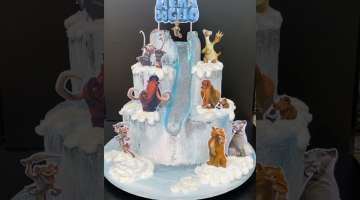Rare Albino Buck Spotted In Northern Wisconsin
A rare albino whitetail deer buck has been spotted and photographed roaming a backyard in northern Wisconsin. Tracy Weese photographed the deer in her backyard in the unincorporated town of Boulder Junction. Albino animals are extremely rare and don’t always make it to adulthood due to their lack of camouflage.
- 1 | 5

A Wisconsin woman stumbled upon a spectacular albino buck in her backyard and snapped a pair of now-viral photos. Tracy Weese was peering across the snow-covered backyard of her Boulder Junction, Wisconsin, home when the remarkable deer strutted by. 'His Majesty just strolled through our backyard,' Weese wrote on Facebook, where she shared two photos of the animal. A photo was later shared by the Vilas County Sherriff's Office, which called the albino buck 'an incredible sight to see.'
- 2 | 5

The photos of deer have garnered more than 8,000 shares since they were posted on Monday, with many commenters calling the deer 'majestic' and 'stunning.' Weese clarified that the deer was albino and not a piebald. Piebald or pied animals have a pattern of unpigmented spots on a pigmented background of hair, feathers or scales. Tracy added that the brown spotted on the deer's head was 'from him rubbing his antlers and head on trees when shedding his white velvet.
- 3 | 5

'The brown stain on his leg is his tarsal gland releasing his scent as he's in rut. He looks different right now due to rut.' Rut refers to the deer mating season. It's unclear how large the albino deer is, but the average deer measures from six to seven feet and can weigh as much as 300lbs. White-tailed deer typically live between six and 14 years, but albino deer tend to have shorter life spans. Most albino and piebald deer die before adulthood.
- 4 | 5

Although the deer are beautiful, wildlife experts say their recessive genetic traits and defects would prove detrimental to deer populations should they flourish. 'They are an unusual sight because they either have multiple physical problems and die early or because of predation,' Ed Clark, president and co-founder of the Wildlife Center of Virginia, told Associated Press. 'Protecting them would not be doing the deer population any good because it would pass the recessive genes into more herds.'
- 5 | 5

The Wisconsin Department of Natural Resources said it's illegal to hunt an 'all-white deer which is entirely white other than the hooves, tarsal glands, head and parts of the head. 'Wisconsin's nine-day gun deer hunt season is scheduled between November 21 and November 29. According to the North Carolina Wildlife Resources Commission, albinism in deer is much rarer than piebald discoloration. 'Piebald deer are much more common with some studies showing the trait may show up in one in 1,000 deer. Albinism is much rarer and may only be observed in one in 30,000 deer,' the website said. Officials in Boulder Junction claim that their city has more albino deer than any other place in Wisconsin.
Related Galleries



















